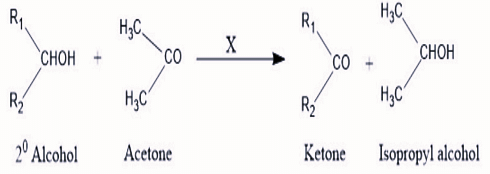One of the following match is correct choose it:
- M1 Acetylcholine receptors confined to brain M2 Acetylcholine receptors neural M3 Acetylcholine receptors are cardiac M4 Acetylcoline receptors glandular
- M1 Acetylcholine receptors neural M2 Acetylcholine receptors confined to brain M3 Acetylcholine receptors are cardiac M4 Acetylcoline receptors glandular
- M1 Acetylcholine receptors neural M2 Acetylcholine receptors cardiac M3 Acetylcholine receptors are cardiac to glandular M4 Acetylcoline receptors confined to brain
- M1 Acetylcholine receptors glandular M2 Acetylcholine receptors neural M3 Acetylcholine receptors are cardiac to brain M4 Acetylcoline receptors cardiac
The Correct Option is C
Solution and Explanation
The muscarinic acetylcholine receptors (mAChRs) are a type of receptor found in various tissues throughout the body. They are involved in parasympathetic neurotransmission and mediate the effects of acetylcholine (ACh) in the nervous system. There are five subtypes of muscarinic receptors, denoted M1 through M5, each of which has distinct locations and functions.
Let's break down each option:
M1 Acetylcholine Receptors (Option 3: "neural"):
M1 receptors are primarily located in the CNS (central nervous system), particularly in neurons. They are involved in cognitive processes and neural activity.
Correct: M1 receptors are mainly neural.
M2 Acetylcholine Receptors (Option 3: "cardiac"):
M2 receptors are primarily located in the heart, specifically in the atria, and play a crucial role in regulating heart rate by inhibiting adenylate cyclase, which leads to a decrease in heart rate.
Correct: M2 receptors are primarily cardiac.
M3 Acetylcholine Receptors (Option 3: "cardiac to glandular"):
M3 receptors are located in smooth muscles and glandular tissues, such as the bladder, bronchi, glands, and blood vessels. These receptors mediate effects like smooth muscle contraction and gland secretion.
Correct: M3 receptors are involved in both cardiac and glandular functions (though primarily glandular).
M4 Acetylcholine Receptors (Option 3: "confined to brain"):
M4 receptors are primarily central nervous system receptors, mainly found in the brain. They play a significant role in modulating dopamine release and affecting motor control.
Correct: M4 receptors are largely confined to the brain.
Why Option 3 is the Correct Answer:
M1 receptors are primarily neural (involved in cognitive and neural functions).
M2 receptors are primarily cardiac (important for heart rate regulation).
M3 receptors are primarily involved in glandular function, but also affect cardiac (indirectly).
M4 receptors are primarily located in the brain.
Thus, Option 3 matches the correct locations and functions of the muscarinic receptors.
Top Questions on carbonyl compounds
- Which of the following are neutral?
- KEAM - 2025
- Chemistry
- carbonyl compounds
- Acetone can be converted to 2-methylpropan-2-ol using:
- KEAM - 2025
- Chemistry
- carbonyl compounds
- The correct stability order of carbocations is
- JEE Main - 2024
- Chemistry
- carbonyl compounds
- According to Oppenauer Oxidation reaction, oxidation of secondary alcohol to ketone by reagent (X) in acetone takes place, what is "X" :

- GPAT - 2024
- Organic Chemistry
- carbonyl compounds
- The Gattermann-Koch reaction is used in the industrial preparation of benzaldehyde. The electrophile involved in this reaction is
- CUET (UG) - 2024
- Chemistry
- carbonyl compounds
Questions Asked in GPAT exam
- Which of the following alkaloids are found as salts of meconic acid?
- GPAT - 2025
- Introductory Pharmacognosy
Choose the correct match of laxative and its Mechanism of Action (MOA):

- GPAT - 2025
- Laxative
Match the following:
(P) Schedule H
(Q) Schedule G
(R) Schedule P
(S) Schedule F2
Descriptions:
(I) Life period of drugs
(II) Drugs used under RMP
(III) List of Prescription Drugs
(IV) Standards for surgical dressing
- GPAT - 2025
- Drug therapy
- Which of the following is used to evaluate disinfectant?
- GPAT - 2025
- Pathogens
Match the following:
(P) Tuberculosis (1) Bacterial
(Q) Diphtheria (2) Viral
(R) Yellow fever (3) Toxoids
(S) Malaria (4) Protozoal- GPAT - 2025
- Pathogens